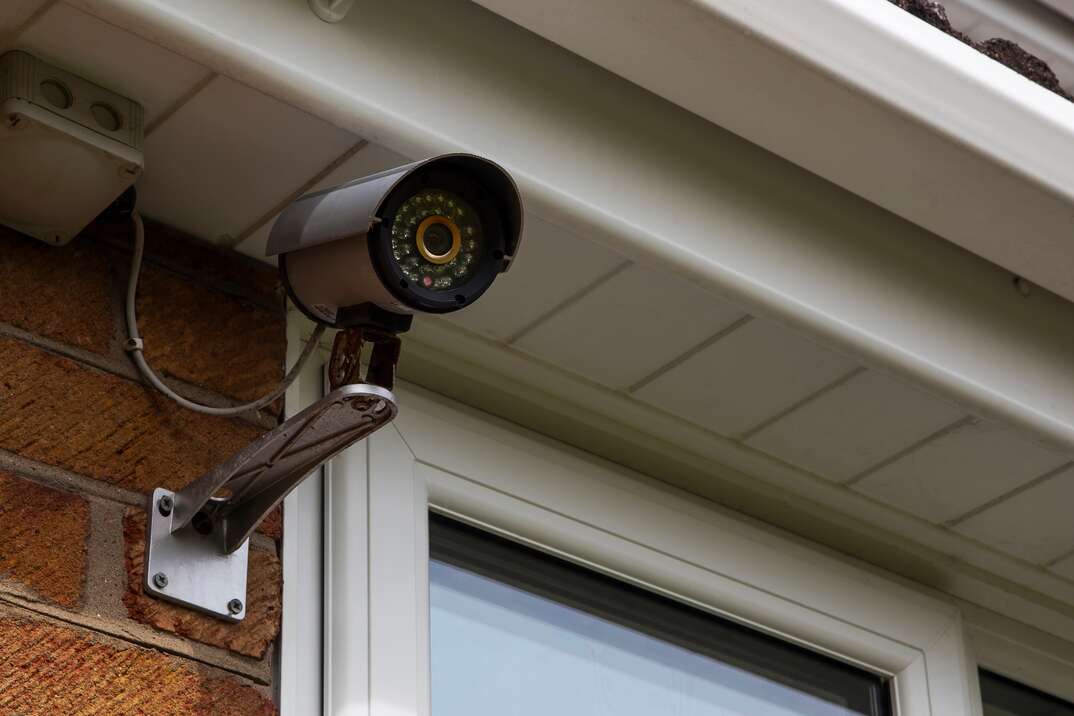- AppliancesElectriciansHVACLandscapingLocksmithPest ControlPlumbingRenovationRoofingT V RepairAll Home Improvement
- Car AccidentClass ActionCorporate LawCriminal DefenseDivorce LawEmployment LawFamily LawFinancial LawLegal AidMedical Injury LawyersMedical MalpracticeReal Estate LawWater Fire RestorationAll Legal
- InvestmentRetirementAll Finance
- Animal InsuranceAutoGeneral InsuranceHealth PolicyHome RentersAll Insurance
- DentalHealth SpecialistsAll Medical
- Animal CareVeterinaryAll Pets
- Auto GlassTowingAll Automotive
How to Conduct a Home Security Audit

You lock your doors at night and keep your landscaping trimmed, but how secure is your home?
Read More Locksmith and Security Articles
Conducting a home security audit can help you spot vulnerabilities that could put you at risk. Learn how to do a free home security audit yourself to spot changes you can make.
Home security audits are step-by-step evaluations of homes to look for potential security issues. A home security audit checklist breaks down the areas based on common security weaknesses. By doing a security check on your home, you can identify home improvements you can make to cut down on the risk of a home invasion. This keeps your family and belongings safer from potential burglars.
How Do You Conduct a Home Security Audit?
It's easiest to create a home security audit checklist based on the features of your home and what you need to check. Not all steps apply to every home. For instance, you can skip the garage check if you don't have a garage attached to your home. Start with this home security audit guide to help you inspect your house.
1. Look at Your Landscaping
Home security audits typically start outdoors because that's where intruders begin. Your landscaping adds to the curb appeal of your home, but it can also affect security. Burglars look for landscaping that gives them cover and limits lines of sight from inside the home and from passersby. Some potential issues with landscaping include:
- Privacy fences of dense hedges along the property line that block the view
- Large bushes near windows and other entry points
- Large boulders or other large landscaping features that offer hiding spots
- Lack of lighting
- Trellises or windows that offer second-floor access
- Overgrown landscaping
To check your landscaping, stand at the edge of your property and consider how well you can see the entry points. Check for hiding places and dark areas at night that provide cover. From inside your home, look out all windows to see if you have a clear view of your entire property.
In addition to correcting potential landscaping issues, you can increase your home's security by adding prickly plants with thorns or spikes near windows. Covering the ground near your home with loose rocks makes it noisier to approach your house.
2. Check Your Doors
As the main entry point to your home, your doors can be a major vulnerability. Removing anything that blocks the view of your door from the road makes it more challenging for someone to enter undetected. Ensure you have solid-core exterior doors on your home to make them more difficult to breach. Steel is typically the most secure material. Avoid doors with windows. If you have glass near your front door, adding security film can help.
Your home security audit checklist should also include the door frames and hardware. Look for rotting or damaged wood on the frame that makes it vulnerable. Metal frames offer the greatest security, but you can also get door jamb reinforcement kits with metal components to make the frame more secure.
Check the screws on the strike plate, which is the flat metal piece where your door latch goes. Screws that are at least 3 inches long reinforce the strike plate.
Finally, your door locks could make your home vulnerable. Look for a deadbolt on the door — if your exterior doors don't have deadbolts, install them.
More Related Articles:
- 8 Benefits of Installing Smart Locks
- Here’s How Much a Locksmith Charges for 5 of the Most Common Services
- Lose Your Keys Often? Here's How to Prevent Lockouts
- Installing a New Deadbolt? Here's Everything You Need to Know
- What Is Rekeying a Lock?
3. Inspect the Windows
Another common way for intruders to enter is through a window, especially one that's unlocked or has a broken latch. Inspect the window frames closely to look for cracks or weaknesses that could make them more vulnerable. Laminated or break-resistant glass on your windows also makes them more difficult to breach.
4. Go Over Your Garage
If you have an attached garage, it can be an easy entry point for intruders. Change access codes to your garage door frequently. Keep landscaping trimmed and away from the garage door. It's also a good idea to have a deadbolt on the door leading from your garage to your home.
5. Secure Items
Security also applies to protecting items outside your home. If you keep tools, bikes, grills or other valuable items outside, make sure they're secured. Inspect any sheds or storage containers outdoors to make sure the locks work. Keep valuable items out of view so your home doesn't become a target.
Elocal Editorial Content is for educational and entertainment purposes only. Editorial Content should not be used as a substitute for advice from a licensed professional in your state reviewing your issue. Systems, equipment, issues and circumstances vary. Follow the manufacturer's safety precautions. The opinions, beliefs and viewpoints expressed by the eLocal Editorial Team and other third-party content providers do not necessarily reflect the opinions, beliefs and viewpoints of eLocal or its affiliate companies. Use of the Blog is subject to the
Website Terms and Conditions.The eLocal Editorial Team operates independently of eLocal USA's marketing and sales decisions.

